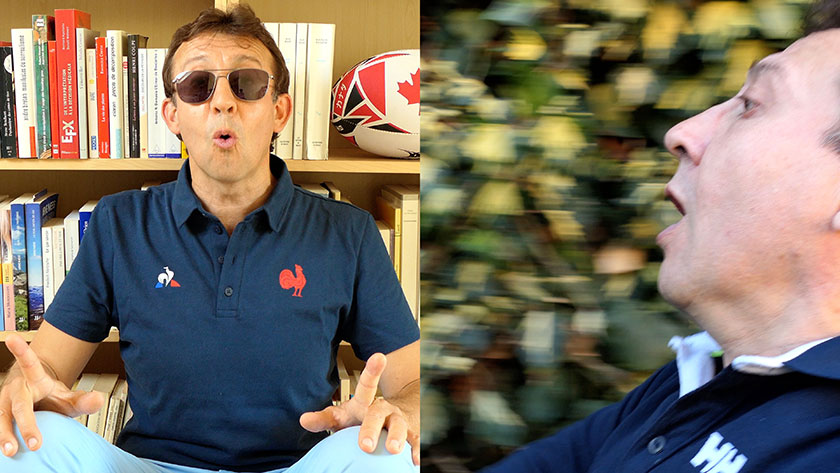Hyperventilation in an effort situation is a tendency to ventilate in excess, for a given metabolic demand.
This is characterized by a disproportionate increase either in the volume of air mobilized or in the respiratory rate, which should not exceed 40 breaths per minute.
Whether at rest or during exercise, during inspiration, the belly inflates slightly and the ribs rise a bit.
On expiration, it is the opposite, the belly deflates and the ribs go down.
In a person who breathes correctly, these movements are not felt because they spend very little energy.
Thus, the neck muscles are almost never used when ventilation is harmonious.
In case of excessive hyperventilation, the normal feeling of shortness of breath becomes unpleasant, and we then speak of dyspnea.
The management of dyspnea linked to hyperventilation, involves, as in rugby, 2 different strategies: avoidance or confrontation.
Avoidance consists of: slowing down your speed or reducing the length of your step or stride, as soon as you start to feel :
-either a rapid increase of the respiratory rate,
-or the tensing of the neck muscles following an excessive inspiratory effort.
If breathing difficulties still persist when walking, do not hesitate to reduce the energy cost by using hiking poles, or a wheeled walker in the event of respiratory failure.
Blowing with slightly pursed lips, bringing in the belly, while slowing down your effort can allow it to continue in better conditions.
But some life situations, such as running or simply having to jog for a few minutes in a school setting, require a confrontation strategy.
For people with tracheal, laryngeal, or bronchial dysfunction, these higher intensity activities can be very painful.
Under these conditions, it is often effective to adopt an exhalation in two stages while putting counter pressure with the lips, while the inspiration is being done in a single time and always without forcing.
To avoid excessive hyperventilation, it is important to focus on three essential points:
- Firstly, to gradually increase your effort without ever forcing your neck muscles during inspiration,
- secondly, to keep breathing as regular as possible without trying to synchronize it with arm or step movements,
- finally, thirdly, to inhale and exhale through the mouth when the exercise gets harder.
Because in an effort situation, the nose has the disadvantage of causing too much resistance to the air passage, whereas at rest it has the advantage of filtering, warming and humidifying the inspired air.
In case of extreme breathing difficulty, for your safety, it is advisable to sit down, or even put the elbows or the hands on the knees, before adopting a prolonged expiration with pursed lips.

